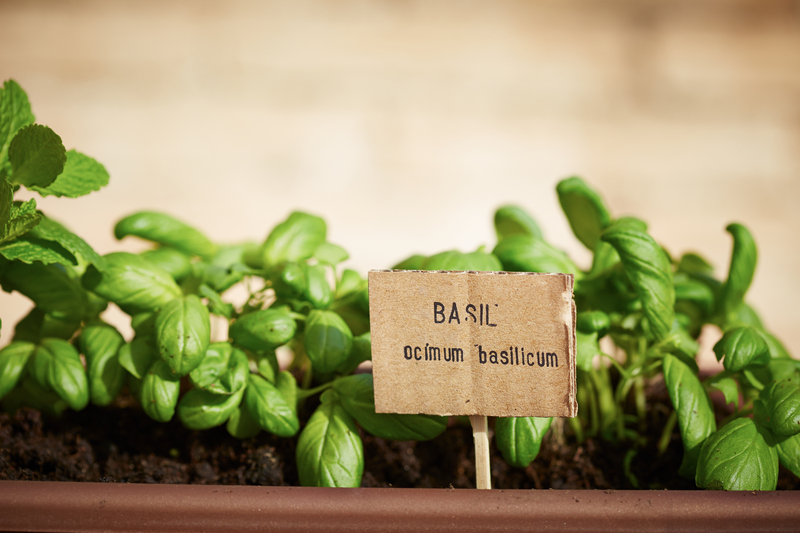The Art of Garden Revival: First Steps to Overcoming Neglect
Posted on 23/08/2025
The Art of Garden Revival: First Steps to Overcoming Neglect
Is your backyard a wild jungle of weeds, a forgotten patch of overgrown shrubs, or a withered collection of pots you can barely recognize? The art of garden revival is both a science and a journey--a delicate process of transforming neglected spaces into flourishing sanctuaries again. Whether you've inherited an abandoned landscape or simply fallen behind on maintenance, this comprehensive guide will arm you with essential strategies, actionable steps, and expert know-how to breathe new life into your green haven.
Understanding Garden Neglect: What Went Wrong?
Before embarking on the rewarding path of garden restoration, it's vital to understand how gardens fall into disrepair. Neglect stems from many causes: time constraints, illness, disinterest, or even harsh weather conditions. Over time, unattended gardens lose their structure and vitality, turning into tangled masses where once-beautiful plants struggle to survive.
- Weed Invasion: Weeds thrive in disturbed or open soil, quickly overwhelming delicate ornamentals.
- Soil Depletion: Years of neglect mean soil may be compacted, depleted of nutrients, and less hospitable to plants.
- Uncontrolled Growth: Shrubs and trees left unpruned can overshadow, choke, or damage neighboring plants.
- Pest and Disease Problems: An unkempt landscape invites pests and allows diseases to spread unchecked.
Garden revival starts with understanding these challenges so you can tackle them effectively and rebuild a thriving outdoor space.

The Mindset for a Successful Garden Restoration
Before grabbing your pruners, cultivate the right mindset. Garden revival isn't a weekend project--it requires patience, planning, and commitment. Allow mistakes, celebrate small victories, and don't be afraid to ask for help.
- Be Realistic: Restoration takes time. Break tasks into manageable chunks and set achievable goals.
- See the Potential: Every garden, no matter how neglected, holds the promise of transformation.
- Enjoy the Journey: Savor the incremental improvements and embrace your garden's gradual rebirth.
First Steps to Overcoming Garden Neglect
1. Survey the Scene
Begin your garden revival process with a walk-through. Take notes and photos, and mark out key features: mature trees, surviving ornamentals, ponds, or hardscaping. Try to identify what can be salvaged and what's past saving.
- Identify survivor plants: Some specimens may have thrived despite neglect--these are your allies.
- Assess hazards: Watch for unstable branches, crumbling infrastructure, or hidden trip hazards.
- Note sunlight patterns: Observe how sun and shade move through your garden during the day. This helps plan future planting.
2. Prioritize Safety and Accessibility
Before getting swept up in creative ideas, tackle anything posing a danger. Clearing unsafe debris, pruning hazardous branches, and stabilizing paths or walls should come first in any garden resuscitation project.
- Wear gloves and sturdy footwear.
- Dispose of or repair any broken glass, rusty tools, or hazardous waste.
- Trim back overhanging limbs or unruly vines from walkways and structures.
3. Weed and Clear Methodically
The journey towards garden recovery often starts with clearing. Tackle weeds, dead plants, and accumulated debris in sections--a small, defined area each session to avoid overwhelm.
- Pace Yourself: Don't try to clear everything in one day. Start near entrances or focal points to see quick wins.
- Dig weeds out by the root, especially perennial types, to prevent regrowth.
- Rake up fallen leaves, sticks, and general clutter for a cleaner canvas.
4. Reconnect with Your Soil
Neglected gardens usually have tired, compacted soil. Healthy soil is the foundation of all plant success. Loosen the top layer with a fork or hoe, and work in well-rotted compost or organic matter.
- Test soil quality for pH, structure, and nutrients. Home test kits or local extension services are invaluable.
- If the soil is very poor, consider adding a fresh layer of topsoil or using raised beds for new plantings.
- Avoid working soil when wet--this compacts it further and damages structure.
5. Prune and Rescue Existing Plants
Look for shrubs, trees, or perennials showing signs of life. Prune dead or diseased wood, cut back overgrowth, and remove suckers or water sprouts. This step in restoring a neglected garden is about revealing the hidden gems!
- Use sharp, clean pruners to make smooth cuts and prevent the spread of disease.
- Remove plants that are diseased beyond rescue or that have become invasive pests.
- Consider transplanting survivors to better locations for improved growth.
6. Water Wisely
After years of neglect, soil may shed water or fail to retain it. Water plants deeply and consistently for the first few weeks, helping roots establish in revitalized soil. Installing a basic drip system or soaker hose saves time in the long run.
- Water early in the day to minimize evaporation and discourage fungal diseases.
- Mulch around plants to retain moisture and suppress future weeds.
Creating a Plan for Long-Term Revival
With the urgent work done, shift focus to a longer-term revival plan. A step-by-step approach to garden revitalization ensures improvements are sustainable and enjoyable:
- Make a wish list: What do you want your restored space to become--a wildlife haven, a flower border, productive vegetable beds?
- Draw a simple plan: Map out garden zones, noting what features you want to keep, remove, or add.
- Create a schedule: Break bigger tasks like new planting, hardscape repair, or lawn reseeding into monthly priorities.
- Invest in basics: Replace or repair essential tools. Buy quality gloves, spades, wheelbarrows, and pruners.
- Start small: Focus on one area as a pilot project before expanding efforts.
Choosing What to Save (and Let Go)
A key part of garden restoration is knowing not every plant or structure can be saved. Be ruthless, yet thoughtful: historic trees, old rose bushes, and established shrubs may be worth the effort, while others are better removed to make way for new growth.
- Consult local garden clubs or extension offices for help identifying valuable plants.
- If unsure, "wait and see" how stressed plants respond to watering, pruning, and feeding before deciding.
- Remove persistent weeds, invasive species, or plants showing signs of incurable disease.
Rebuilding the Heart of Your Garden
Soil Care and Renewal
Reviving soil health is paramount. Continue to add compost, mulch, and slow-release organic fertilizers throughout the season. Consider crop rotation or green manure crops in large planting areas to boost fertility and structure.
- Mulch with organic matter--shredded leaves, straw, or bark chip.
- Sow nitrogen-fixing cover crops in fallow areas to naturally enrich the soil.
Smart Plant Choices for Garden Revitalization
Pick hardy, resilient plants adapted to your local climate, especially in the early stages of garden renewal. Native species, tough perennials, and low-maintenance shrubs can fill gaps quickly while you plan for more specialized additions.
- Group plants by water and sun needs for efficient maintenance.
- Consider wildlife-friendly selections to bring pollinators back to your recovering landscape.
Rejuvenating Lawns and Ground Covers
Lawns often suffer most from neglect. Rake away thatch, aerate compacted soil, and reseed bare patches. In severe cases, it might be easier to replace sections with ground covers or wildflower meadows for a lower-maintenance and more sustainable solution.
The Role of Maintenance: Keeping Neglect at Bay
The art of garden revival doesn't end with initial restoration. Maintenance is vital to prevent a return to neglect. Establish new routines:
- Weekly checks: Pull new weeds, check for pests, and water as needed.
- Prune regularly: Keep growth in check and stimulate healthy new shoots.
- Feed and mulch: Top up organic matter and nutrients each season.
- Rotate tasks: Spread jobs out over the month to prevent overwhelm.
*Remember*, restoring a garden is a journey, not a sprint. Budget for seasonal projects and celebrate successes like the return of blooms, butterflies, or the satisfaction of sitting in your reclaimed oasis.
Common Mistakes to Avoid in Garden Restoration
- Trying to do everything at once -- leads to burnout and frustration.
- Neglecting soil health-- plants thrive or fail depending on what's beneath them.
- Ignoring climate and site conditions-- select plants that suit your garden's unique environment.
- Over-planting too soon-- allow revived soil to rest and recover before crowding new specimens.
- Forgetting to mulch and protect new plantings-- reduces future weeding and watering needs.

Expert Tips for a Flourishing, Revived Garden
The journey of garden revival can be deeply rewarding. Here are expert strategies for ensuring lasting success:
- Don't be afraid to seek help--neighbors, friends, or professional landscapers can speed the process.
- Document your progress with photos--they'll inspire you on tough days.
- Join local gardening groups or online forums for support and advice.
- Consider installing rain barrels or compost bins to make your revived garden more sustainable.
- Set up inviting seating or paths to encourage regular visits and ongoing care.
Conclusion: Witness the Transformation
The art of garden revival is a testament to patience, vision, and nurturing. By following these essential first steps, from careful assessment to soil care and smart maintenance routines, you'll soon see an abandoned plot transformed into a personal paradise bursting with life. Whether your goal is a productive vegetable haven, a wildlife-friendly retreat, or a flowering sanctuary, overcoming garden neglect is about more than restoration--it's about rekindling a relationship with nature and yourself.
So roll up your sleeves, embrace each season's changes, and savor the journey of making your outdoor space thrive again. The results are not just beautiful gardens, but also the renewal of spirit and pride that comes with reviving something once forgotten.

